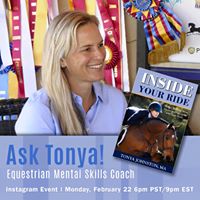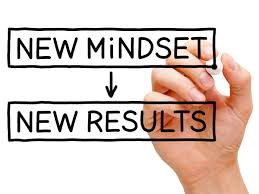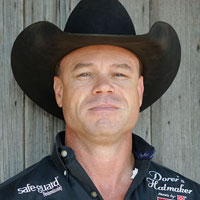 When people participate or watch sports many people make the statement, ‘mind over matter’ or ‘it’s all about your mental game,’ but how many athletes train their brain to prepare for a competition?
When people participate or watch sports many people make the statement, ‘mind over matter’ or ‘it’s all about your mental game,’ but how many athletes train their brain to prepare for a competition?
“When you get to those really elite levels [of sports], you have athletes telling you it’s 96-97-98 percent mental,” said mental skills coach Tonya Johnston. “[People need to] understand that your mental skills are absolutely apart of the package as far as seeing yourself as an athlete.”
Johnston has her Masters in sports psychology and specializes in working with equestrian athletes, traveling across the holding clinics and working with equestrian sports teams such as Stanford, Smith and USC. Johnston emphasizes in her clinics and book “Inside your Ride,” that taking time to work on your mental game is just as important as working on the physical aspect. country
“When you spend 10, 12, 15 hours a week on physical and zero hours on mental skills, that could be where nerves and stress come from,” Johnston said. “Because I believe it’s much more mental activity, my competing is much more mental but all of my practice is in the physical realm.”
Johnston states that when your physical game is to a certain level, when it comes to competition day it is abo ut making good choices mentally while in the moment.
ut making good choices mentally while in the moment.
“[When] the physical is dialed in, they know how to get the most out of themselves, they know how to connect with their horse and communicate with their horse and they understand that on any given day it’s about being present,” Johnston said.
One of the best pieces of advice Johnston mentioned was focusing on the positive.
Many people focus on bad days [and ask] what did I do? What happened? Why didn’t I ride well?” Johnston said. “I look first and foremost at good days-what are you already doing naturally and help that become part of [your] routine.”
Some other ways Johnston recommended to become more consistent and improve your mental game in the arena is by:
- Visualizing
- Tracking goals
- Making sure your energy is in a good place
- Making sure you’ve got a routine in place
Lastly Johnston notes that it’s just as important for you to have a routine as much as your “horse before competing, such as stretching, loosening up and having a plan for when you’re in a hotel.
“When you have an amazing run, think back to how did you prepare yourself, where was your focus, what were you saying to yourself, what were you doing before you got on your horse,” Johnston said.
To hear more tips from Tonya Johnston, listen to the full interview at: https://chtolive.com/podcasts/ (Gold and Platinum members get full access to podcasts, Silver members get access for seven days when new podcasts are uploaded.)


 Eight-million-dollar trainer Matt Gaines is a big believer in coaching. It’s why he and other leading trainers go to each other’s ranches to work horses: to learn from each other and pick up on things they may not be seeing or feeling themselves.
Eight-million-dollar trainer Matt Gaines is a big believer in coaching. It’s why he and other leading trainers go to each other’s ranches to work horses: to learn from each other and pick up on things they may not be seeing or feeling themselves. Being judged is always emotional, even when you choose to be judged in the name of competition. Subjective sports are often rife with controversy, because let’s face it, everyone has an opinion. Cutting is no exception.
Being judged is always emotional, even when you choose to be judged in the name of competition. Subjective sports are often rife with controversy, because let’s face it, everyone has an opinion. Cutting is no exception.
 does not add or subtract any points,
does not add or subtract any points, 
 When people participate or watch sports many people make the statement, ‘mind over matter’ or ‘it’s all about your mental game,’ but how many athletes train their brain to prepare for a competition?
When people participate or watch sports many people make the statement, ‘mind over matter’ or ‘it’s all about your mental game,’ but how many athletes train their brain to prepare for a competition? ut making good choices mentally while in the moment.
ut making good choices mentally while in the moment. Cows look all the same yeh? I mean seriously how does one black cow look different to the next, especially when they are the same size, sex and state of health? And then how the hell do you remember 30 of them and on top of that you have to keep track of which ones have been worked or not? Arrrgh!!!! Yes cutting is certainly a mind game!
Cows look all the same yeh? I mean seriously how does one black cow look different to the next, especially when they are the same size, sex and state of health? And then how the hell do you remember 30 of them and on top of that you have to keep track of which ones have been worked or not? Arrrgh!!!! Yes cutting is certainly a mind game!